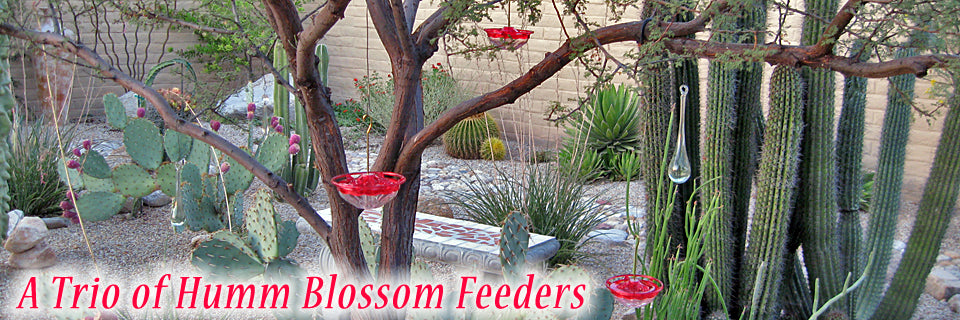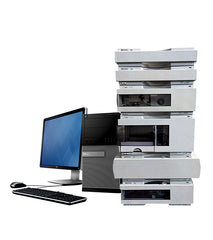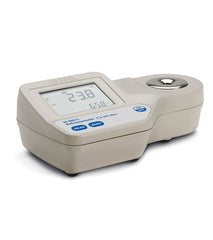About Us
Let's be honest - About Us pages are boring!
Sure, they list bios, chronological work experience, and education, but they’re often dry and personality-free. Worse, they really don’t help you understand the people you’re trying to find more about.
Let's fix that!
by Douglas Everett
In my past life, I evolved from a broadcast videographer to a hummingbird enthusiast. I spent most of my adult life in the Chester County/ Philadelphia region. I was a co-owner of a broadcast video production/ editing company where we created television commercials, corporate videos, and many music videos for ‘Midnight Special’ and the then-nascent MTV. In the 70’s/80’s, we worked for the networks in the world's‘ hot spots’ (Three Mile Island, Tehran, Riyadh, Nicaragua, El Salvador, and Guyana) where network union employees refused to venture.

In Central and South America, video crews were often embedded with rebels or government troops in the tropical jungles. While mostly sitting and waiting with my powerful lensed video camera in hand, I often noticed many little birds flitting about- hummingbirds. I was fascinated and watched and videoed. In Pennsylvania, as you well know, we have only one species of hummingbird. Much to the chagrin of my wife and family I always opted for the work that put me in environments with more hummingbirds. And through the years I amassed a huge archive of hummingbird videos. Outside Quito, Ecuador is perhaps the most special place on the planet for me.
Years later I sold my share of the video company and migrated to software development for the then emerging video disc and then CD industry which quickly morphed into the internet and database technology. Years later I moved to Tucson, Arizona where there are many hummingbird species.

I immersed myself into all aspects of hummingbirds creating the original Hummingbird Society website for Ross Hawkins and being on his board and then revising The Hummingbird Monitoring Network website for Susan Wethington. The late George West became a close friend, and we shared time dabbling with technology. I was amazed at his ability to grasp new technology and equipment at his advanced age. I banded birds with licensed banders and wish some of the data could see the “light-of-day”. I participated in the development of the original database software for all Hummingbirds. I am now exploring the potential for avian pox in hummingbirds (as reported by Holly Ernest and Loreto Godoy). It indeed scares me that perhaps we humans may exacerbate the transmission of the disease via our hummingbird feeders.
In any case, when in Tucson, I pondered the hummingbird food sources.
Looking out my windows at Finger Rock, in the Santa Catalina Mountains, eight (8) miles north of downtown Tucson, and viewing the hummingbirds feeding at my feeders, it is indeed a joy as they are wonders to behold. But year after year, as I watched, I also pondered. Was the sugar water that I have been feeding the birds OK for them, causing them harm, or should I not be feeding them at all? Sure, we have the appropriate flowers in our gardens that attract the birds, but it is more fun to see them up close at a feeder.

Common human-made hummingbird nectar is understood to be a mixture of one part granulated sucrose and four parts water. This sugar usually comes from a bag purchased at the supermarket. This is what most people use to feed their hummingbirds; the Audubon Society recommends it, as most hummingbird feeder packaging adheres to this standard, their mothers used it, and their friends used it. People go to great lengths to defend sugar, yet very few outside the scientific community really know much about hummingbird nectar. Hummingbird evangelists argue that nectar is sucrose/sugar. Their arguments are all anecdotal. But this is incorrect. Yes, the birds drink it as they would any sweetened solution.
And then I started thinking about the water to make the nectar, which is the most significant component of the solution. Is it treated city water, private well water, or is it via a water softener (salty) or reverse osmosis (acidic)?
And who is protecting the birds from the greed of corporate America? The ‘wild bird food industry’ is completely unregulated, so commercial nectars may be laden with preservatives, chemicals, additives, etc., but what about the home-made ingredients we offer our hummers?
I believe the many millions of ‘human hummingbird feeders’ should know what they are feeding the birds. They are wild animals that frequent feeders and drink enormous amounts of sugar water, but is it good for them?

Yet, at 60 years old, I had time on my hands, ample resources, and an agreeable wife to pursue the subject further.
I employed a systematic approach to identify literature on flower nectar components and sugar concentration. Beginning with relevant papers already known to me, I searched their list of references as well as their citing articles using Google Scholar’s “Cited by” function to find additional relevant papers. I repeated these searches with each additional paper collected in this manner until no further relevant papers could be found. I considered English-language scientific journal and conference proceeding papers, scholarly book chapters, and technical reports by government agencies and environmental consulting companies. JSTOR and Springer databases were also utilized.

I then consulted with multiple university researchers from Arizona State University, Swarthmore, USC, and Auburn.
They suggested that the separation, identification, and quantification of simple sugars can be readily achieved using chromatography.
High-performance liquid chromatography,(HPLC) is perhaps the simplest technique, often requiring little in the way of sample preparation, particularly with liquids.
We studied the sugar components of many flowers, in the Rockies, that hummers frequent. Many flowers produce nectar in order to attract pollinators such as hummingbirds. Floral nectar is used as the main source of energy for hummingbird and is primarily composed of various concentrations of the disaccharide sucrose and the monosaccharides fructose and glucose (Stiles and Freeman 2003) as well as small amounts of amino acids and electrolytes (Martinez del Rio 1990; Chalcoff et al. 2008).
So if Mother Nature’s flowers have three types of sugars then why do we humans opt to feed them one?
And, this is what I believe is most important as we feed our little birds. To be specific the components of Mother Nature’s plant nectar is made up of sucrose (disaccharide) and hexose (glucose and fructose; monosaccharides) with very small amounts of 11 other sugars (Lotz & Schondube, 2006), free amino acids, vitamins and lipids (Witteveen et al., 2014).
To be accurate:
- 73% of all nectars include sucrose, glucose, and fructose;
- 4% of nectars have sucrose only;
- 17% of nectars have sucrose with either glucose (11%) or fructose (6%)
SUCROSE
Since hummingbirds prefer a blend of three plant sugars we decided to start our hummingbird nectar research by exploring the processing methods and specifications of the white table sugar (sucrose) that is offered at the feeders by so many hummer aficionados.
Recent studies about the sources, engineering and processing of sugars, and a new understanding of sugar’s role has broadened significantly. There are many types and derivations of sugar available. Sugar processing involves the introduction of many additives, chemicals and enhancers before it reaches the consumer and grades of sugar sources are often suspect. It is critical to consider that the type and source of sugar, as well as their granulation will impact the extent of their role when feeding birds.
First off I discovered that according to PETA animal ingredients are used in the manufacture of white table sugar. What animal product? Bone char, which is used to process sugar, is made from the bones of cattle from Afghanistan, Argentina, India, and Pakistan. The bones are sold to traders in Scotland, Egypt, and Brazil who then sell them back to the U.S. sugar industry. The European Union and the USDA heavily regulate the use of bone char. Only countries that are deemed BSE-free can sell the bones of their cattle for this process. Bone char—often referred to as natural carbon—is widely used by the sugar industry as a decolorizing filter, which allows the sugar cane to achieve its desirable white color. Other types of filters involve granular carbon or an ion-exchange system rather than bone char.
I felt sugar made with bone char was indeed a disturbing thought so I sourced sugar that utilizes the ion-exchange process rather than ‘Bone Char’. A purer and more expensive raw material.
FRUCTOSE
Thus, with better sucrose now we needed the additional ingredients found in Mother Nature’s flowers. I opted to add pharmaceutical grade crystalline fructose (not HFCS) - the sweetest of all naturally occurring carbohydrates. In general, fructose is regarded as being 1.73 times sweeter than sucrose.
In addition, and this is important when trying to attract hummers, the sweetness of fructose is perceived earlier than that of sucrose or glucose, and the taste sensation reaches a peak (higher than that of sucrose). Fructose can also enhance other flavors in the system. At first taste the hummers would go WOW!!! If they could. And thus return to that feeder time-after-time.
Fructose exhibits a sweetness synergy effect when used in combination with other sweeteners. The relative sweetness of fructose blended with sucrose and dextrose is perceived to be greater than the sweetness calculated from individual components.
Recent 2014 research (Evolution of sweet taste perception in hummingbirds by transformation of the ancestral umami receptor. Maude W. Baldwin, et al Science Magazine) states: Experiments were performed in the Santa Monica Mountains at a field site frequented by wild hummingbirds. We recorded the behavior of birds presented for 15 min with test stimuli, and in control experiments, hummingbirds displayed strong preference for sucrose over water and high behavioral affinity for several sugars abundant in nectar, including sucrose, glucose, and fructose.
Another interesting article is Hummingbirds can fuel expensive hovering flight completely with either exogenous glucose or fructose
http://onlinelibrary.wiley.com/doi/10.1111/1365-2435.12202/abstract
SWEETNESS

By utilizing a refractometer one can identify the sugar concentration in the flower nectar as between 15% and 30%. But concentration does not determine sweetness.
All these facts are published science, most dating back many years. In my research I was not trying to author a research paper for review by peers and for a ‘pat on the back’ but to offer hummers better nutrition.
After sourcing safe raw materials I started Hummingbird Market. We are now one of the larger provider of hummingbird nectar in the SW United States. In Tucson and Phoenix it is difficult to find a competitor product on the shelf (Except the big-boxes). San Diego, Santa Barbara and Texas markets are growing as well.
My Tucson property has thirteen (13) feeders spread out over 2/3 acre of desert foothills, adjacent to the Coronado National Forest, and is heavily landscaped with hummingbird attracting flowers. Salvia leucantha being perhaps the most prodigious and then ocotillo, penstemons, hesperaloe and others. And as a result I have attracted eight (8) hummingbird species. It may have helped that I have completely outfitted my adjacent neighbors with feeders and nectar.
Last year Hummingbird Market funded a high school biology class whereby they utilized a Sucrose/D-Fructose/D-Glucose Assay Kit at a local nursery to ascertain the difference between greenhouse flowers and wild flowers. Similar to Robert Vickery’s study about Variance and replenishment of nectar in wild and greenhouse populations
